Have you ever wondered how many volcanoes are scattered across the stunning landscapes of the Philippines? Prepare to be amazed as we delve into the depths of the country’s volcanic beauty and discover the mesmerizing power that lies beneath. Brace yourself for a journey filled with geological wonders, historical eruptions, and the fascinating role these fiery giants play in shaping the Philippines.
Active Volcanoes in Luzon
Luzon, the largest island in the Philippines, is a region known for its active volcanoes. These natural wonders not only shape the landscape but also contribute to the unique beauty and biodiversity of the area.
The most famous and active volcano in Luzon is Mayon in Albay province. With its perfect cone shape, it is considered one of the most iconic volcanoes in the world. Mayon has been a subject of fascination and awe for locals and tourists alike, attracting thousands of visitors each year.
Another prominent active volcano in Luzon is Bulusan in the province of Sorsogon. Known for its scenic beauty and frequent eruptions, Bulusan offers breathtaking views and opportunities for hiking and exploration.
Taal Volcano, located in Batangas province, is also a significant active volcano in Luzon. Its picturesque crater lake and the volcano island within it make Taal a popular tourist destination.
Lastly, Pinatubo had a major eruption in 1991, which stands as one of the most significant eruptions in recent history. The eruption profoundly impacted the local communities and had global effects on climate, making it a historically significant volcano.
“These active volcanoes in Luzon showcase the dynamism and power of nature. They attract both nature enthusiasts and researchers who seek to understand the geological processes that shape our world.”
Active Volcanoes in Luzon:
| Volcano | Location | Status |
|---|---|---|
| Mayon | Albay | Active |
| Bulusan | Sorsogon | Active |
| Taal | Batangas | Active |
| Pinatubo | Zambales | Active |
These active volcanoes in Luzon are a testament to the geological richness of the Philippines. While they can pose risks due to potential eruptions, they also provide valuable insights into the Earth’s processes and create awe-inspiring landscapes.
Most Dangerous Volcanoes in the Philippines
The Philippines is home to several dangerous volcanoes that have a history of explosive eruptions. These volcanoes pose significant risks to nearby communities and are closely monitored by the Philippine Institute of Volcanology and Seismology (PHIVOLCS). Let’s take a closer look at some of the most dangerous volcanoes in the Philippines:
1. Mayon Volcano
Mayon Volcano, located in Albay, is known for its frequent eruptions and has been referred to as the “perfect cone” due to its symmetrical shape. It has erupted more than 50 times in the past 400 years, making it one of the most active volcanoes in the country. Its eruptions are often accompanied by pyroclastic flows and lava flows, posing a serious threat to surrounding areas. Despite the dangers, Mayon Volcano’s striking beauty continues to attract tourists from around the world.
2. Taal Volcano
Taal Volcano, situated in Batangas, is one of the most dangerous volcanoes in the Philippines due to its potential for explosive eruptions. It is located within a lake and has a history of creating new volcanic islands during eruptions. The most recent eruption occurred in January 2020, prompting the evacuation of thousands of residents in nearby areas. Taal Volcano remains closely monitored for any signs of activity, and precautionary measures are in place to ensure the safety of surrounding communities.
3. Pinatubo Volcano
Pinatubo Volcano, located in Zambales, gained international attention with its cataclysmic eruption in 1991. This eruption was one of the largest and most devastating volcanic events of the 20th century. It resulted in the displacement of thousands of people and had global effects on climate. Since then, Pinatubo Volcano has remained dormant, but its past eruption serves as a reminder of its potential danger.
4. Kanlaon Volcano
Kanlaon Volcano, situated in Negros Island, is one of the most active volcanoes in the Philippines. It has had numerous eruptions throughout history, with the most recent occurring in 2016. Kanlaon’s eruptions are often characterized by ashfall, pyroclastic flows, and volcanic earthquakes. Authorities closely monitor its activity and continuously remind nearby communities to stay vigilant and prepared.
These dangerous volcanoes in the Philippines serve as a reminder of the dynamic nature of the earth’s crust. The constant monitoring and preparedness efforts by PHIVOLCS help to mitigate risks and ensure the safety of the Filipino people. It is crucial for residents in volcanic areas to stay informed, follow evacuation procedures, and heed the advice and warnings provided by authorities.
Volcano Eruption History in the Philippines
Volcanoes in the Philippines have a long and fascinating history of eruptions. For hundreds of years, humans have documented volcanic activity in the country, providing valuable insights into the behavior of these natural phenomena. One of the most significant eruptions in recent history occurred in 1991 when Mount Pinatubo erupted, leaving a lasting impact on both the local and global scale. Additionally, Mayon Volcano has been consistently active, with ongoing eruptions that have captivated the attention of scientists and tourists alike.
“The history of volcanic activity in the Philippines provides us with crucial information about the nature of these eruptions and allows us to better understand the risks associated with living near active volcanoes,” explains Dr. Maria Santos, a leading volcanologist.
The 1991 eruption of Mount Pinatubo was one of the most significant volcanic events of the 20th century. It released a massive amount of volcanic ash, gases, and pyroclastic material into the atmosphere, causing widespread destruction and affecting global climate patterns. The eruption served as a stark reminder of the power and unpredictability of volcanic activity.
Another notable volcano in the Philippines is Mayon Volcano, located in Albay. It has a long history of eruptions, with over 50 recorded eruptions in the past 400 years. The volcano’s symmetrical cone shape and frequent eruptions have made it a popular tourist attraction, despite its dangerous nature.
Key Eruption History:
- 1991 eruption of Mount Pinatubo – one of the largest eruptions of the 20th century.
- Ongoing eruptions of Mayon Volcano – showcasing the persistent activity of this volcano.
Volcano eruption history in the Philippines serves as a reminder of the country’s dynamic geological nature and the importance of ongoing monitoring and preparedness efforts.
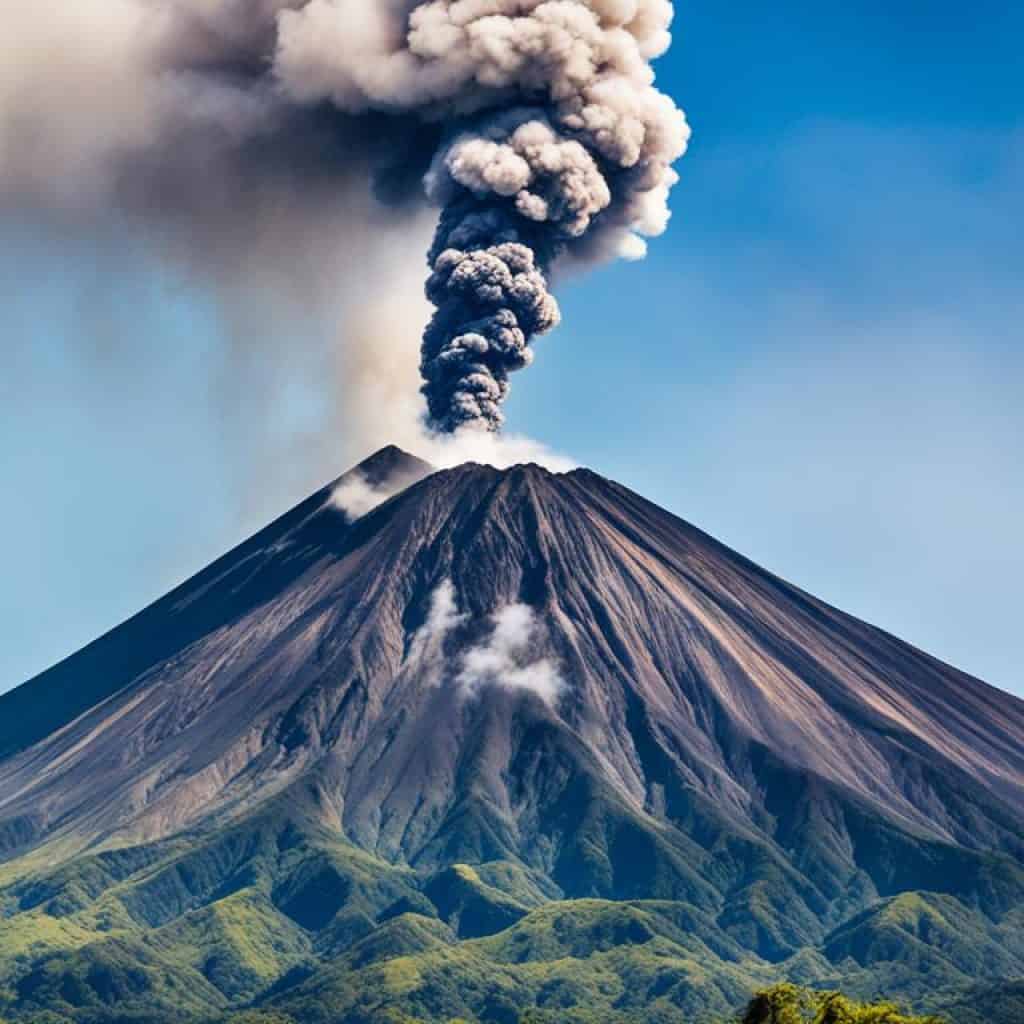
References:
- Philippine Institute of Volcanology and Seismology (PHIVOLCS)
- Smithsonian Institution’s Global Volcanism Program (GVP)
- Dr. Maria Santos, Volcanologist
Philippines and the Ring of Fire
The Philippines is situated in the Pacific Ring of Fire, an area known for its frequent seismic and volcanic activity. This region encompasses a continuous series of oceanic trenches, volcanic arcs, volcanic belts, plate movements, and volcanic activity.
The presence of the Ring of Fire greatly contributes to the high number of active volcanoes in the Philippines. The country’s location on the boundaries of several tectonic plates makes it prone to volcanic eruptions and earthquakes.
The Ring of Fire spans an impressive 40,000 kilometers and is home to about 75% of the world’s active volcanoes. It stretches along the coasts of the Pacific Ocean, including countries such as Japan, Indonesia, and the United States.
The volcanic activity within the Ring of Fire has significant implications for the Philippines. It not only shapes the country’s geological landscape but also influences its climate, ecosystems, and the lives of its people.
| Effects of the Ring of Fire on the Philippines | Description |
|---|---|
| Volcanic Activity | The Ring of Fire is responsible for the numerous active and potentially active volcanoes in the Philippines. These volcanoes pose risks to nearby communities and require continuous monitoring. |
| Earthquakes | The tectonic activity along the Ring of Fire leads to frequent earthquakes in the Philippines. These seismic events can cause damage to infrastructure and affect the lives of the population. |
| Tsunamis | In addition to earthquakes, the Ring of Fire also increases the risk of tsunamis. Underwater earthquakes can trigger large waves that can devastate coastal areas. |
| Geothermal Energy | The volcanic activity within the Ring of Fire provides opportunities for harnessing geothermal energy. The Philippines is one of the world’s leading producers of geothermal power. |
The Philippines has made significant efforts to monitor and prepare for volcanic activity and earthquakes. Organizations like PHIVOLCS play a vital role in issuing timely warnings and ensuring public safety. Continuous research and preparedness measures help mitigate the risks associated with the Ring of Fire.
“The presence of the Ring of Fire in the Philippines highlights the dynamic nature of the Earth’s crust. While it poses challenges, it also presents opportunities for scientific study and resource utilization.” – Dr. Maria Corazon de Ungria, Geologist
Taal Volcano in the Philippines
Taal Volcano, located in Batangas, is one of the most famous and visited volcanoes in the Philippines. Its picturesque crater lake and frequent eruptions attract tourists and researchers alike. In fact, it is one of the world’s smallest active volcanoes, known for its unique and stunning features.
The most recent eruption of Taal Volcano occurred in January 2020, causing widespread concern and necessitating the evacuation of thousands of residents in the surrounding areas. This event highlighted the volatility and importance of monitoring such natural phenomena to mitigate potential risks.
Historical Eruptions of Taal Volcano
Taal Volcano’s eruption history stretches back through centuries. Notable eruptions include:
- The 1754 eruption, which involved the flow of lava and ash plumes.
- The 1911 eruption, which caused significant damage to properties and resulted in the loss of lives.
- The 1965 eruption, which produced destructive pyroclastic flows and ejected massive ash clouds.
Throughout history, Taal Volcano has demonstrated its potential for catastrophic eruptions, serving as a constant reminder of the need for vigilance and preparedness.
“Taal Volcano is a remarkable geological phenomenon that attracts both researchers and nature enthusiasts. Its unique features and frequent eruptions make it a subject of great interest and study.”
Taal Volcano’s Crater Lake
One of the most captivating features of Taal Volcano is its crater lake. The island within the lake, known as Volcano Island, adds to its mystique and allure. The lake, which has an otherworldly beauty, is a sight to behold.
The picturesque scenery of the crater lake mesmerizes visitors, highlighting the juxtaposition between the tranquil waters and the volcanic activity that lies beneath. However, it’s important to remember that appearances can be deceiving, and the serene surface of the lake masks the volcano’s potential for danger.
| Elevation | Location | Category |
|---|---|---|
| 311 meters (1,020 ft) | Caldera | Complex volcano |
Despite the allure, Taal Volcano serves as a stark reminder of the power and unpredictability of nature. It is a testament to the ongoing geological processes that shape our planet and warrant ongoing scientific study.
Mayon Volcano Facts
Mayon Volcano, located in Albay, is not only the most active volcano in the Philippines but also known for its perfect cone shape. It has erupted over 50 times in the past 400 years and is closely monitored by PHIVOLCS. The volcano is a popular tourist attraction due to its beauty and its destructive power.
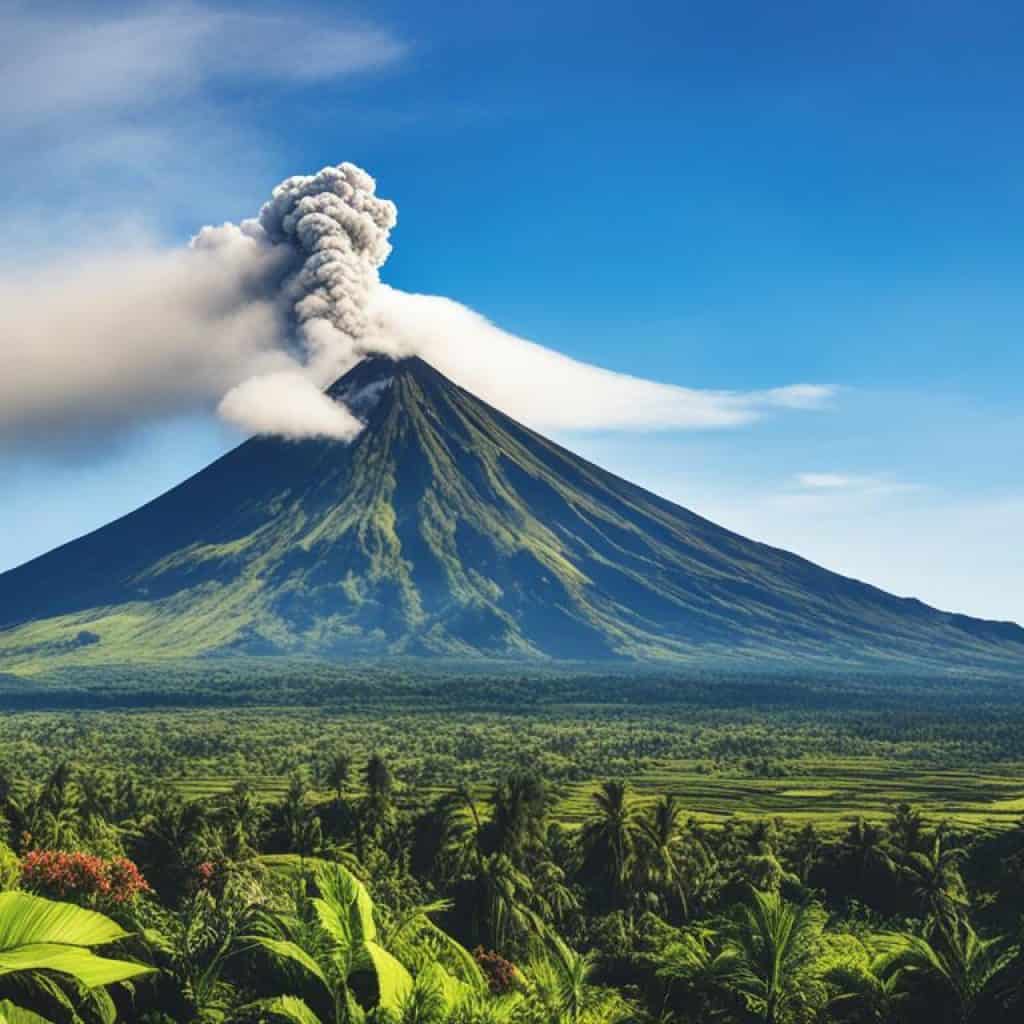
“Mayon Volcano is truly a sight to behold. Its symmetrical cone shape is a natural wonder, captivating visitors from around the world. But behind its beauty, lies a powerful force of nature that demands respect and caution.”
Standing tall at 2,462 meters, Mayon Volcano dominates the landscape of Albay province. Its perfect cone shape is a result of its frequent eruptions, which have shaped and reshaped the volcano over time. The local community reveres Mayon as a sacred mountain, believing it to be a dwelling place of powerful spirits.
However, Mayon’s beauty comes with a destructive side. Its eruptions are often explosive and accompanied by pyroclastic flows, ashfall, and lahar. The most devastating eruption occurred in 1814, burying entire towns under volcanic debris and claiming thousands of lives. Since then, Mayon has seen several significant eruptions, including the most recent one in 2018.
Mayon Volcano Quick Facts:
- Location: Albay province, Bicol region, Luzon, Philippines
- Elevation: 2,462 meters (8,077 feet)
- First recorded eruption: 1616
- Number of eruptions in the past 400 years: Over 50
- Last major eruption: January 2018
- Danger zone radius during eruptions: 6 to 8 kilometers
- Primary hazards: Pyroclastic flows, ashfall, lahars
- Monitoring agency: Philippine Institute of Volcanology and Seismology (PHIVOLCS)
- Tourist attractions: Mayon Skyline View Deck, Cagsawa Ruins
Despite the dangers it poses, Mayon Volcano continues to draw tourists and researchers alike. Visitors can explore the Mayon Volcano Natural Park, hike to the summit, or take scenic drives around the volcano. The local government and PHIVOLCS work hand in hand to ensure the safety of nearby communities by implementing strict monitoring and evacuation plans.
Mayon Volcano stands as a testament to the immense power and beauty of nature. While its eruptions remind us of the potential dangers, they also serve as a reminder of the resilience and adaptability of life in the face of adversity.
| Height | Last Major Eruption | Location |
|---|---|---|
| 2,462 meters (8,077 feet) | January 2018 | Albay province, Bicol region, Luzon, Philippines |
Mount Pinatubo Eruption
The eruption of Mount Pinatubo in 1991 was a catastrophic event that had far-reaching consequences. It was one of the most significant volcanic eruptions in recent history, causing widespread destruction and loss of lives. However, its impact extended beyond the immediate vicinity, impacting global climate patterns. The eruption emitted a massive amount of volcanic ash and gases into the atmosphere, leading to a drop in global temperatures the following year.
The eruption of Mount Pinatubo serves as a stark reminder of the power and unpredictability of nature. It was a devastating event for the Philippines and the surrounding regions, highlighting the need for effective disaster management and preparedness. Since the eruption, efforts have been made to monitor volcanic activity in the area to better understand and mitigate the risks associated with future eruptions.
“The eruption of Mount Pinatubo was both tragic and awe-inspiring. It demonstrated the immense power of nature and its ability to disrupt and shape our world.” – Dr. Maria Santos, Volcanologist
The volcanic ash and gases released during the eruption had significant global consequences. The ash particles remained in the atmosphere for an extended period, reflecting sunlight and causing a temporary cooling effect on the planet. This phenomenon came to be known as “Pinatubo Effect.” The impact on climate was observed globally, with changes in temperature and precipitation patterns.
The eruption of Mount Pinatubo was a stark reminder of the need for preparedness and resilience in the face of natural disasters. It served as a catalyst for improving volcanic monitoring systems and disaster response strategies, not only in the Philippines but also worldwide. The lessons learned from this devastating event have contributed to our understanding and management of volcanic hazards, ultimately working towards safeguarding lives and minimizing the impact of future eruptions.
Active Volcanoes in the Visayas
The Visayas region of the Philippines boasts several active volcanoes, contributing to its unique volcanic landscapes and scenic beauty. Two notable active volcanoes in the Visayas are Kanlaon in Negros Occidental and Hibok-Hibok in Camiguin.
| Active Volcanoes in the Visayas | Location | Most Recent Eruption |
|---|---|---|
| Kanlaon | Negros Occidental | March 29, 2016 |
| Hibok-Hibok | Camiguin | December 4, 1951 |
Kanlaon, also known as Mount Kanlaon, is located in Negros Occidental. It stands as one of the most active volcanoes in the Philippines, with a history of eruptions dating back to the 19th century. The most recent eruption occurred on March 29, 2016, prompting the alert level to be raised.
Hibok-Hibok, situated in the beautiful island of Camiguin, is another active volcano in the Visayas. This stratovolcano has a rich history of eruptions, the most significant of which happened on December 4, 1951. The eruption resulted in the loss of lives and caused extensive damage to surrounding areas.
Both Kanlaon and Hibok-Hibok are closely monitored by the Philippine Institute of Volcanology and Seismology (PHIVOLCS) to ensure the safety of nearby communities. Continuous monitoring enables early detection of any signs of volcanic activity, allowing authorities to issue timely warnings and implement necessary evacuation measures.
The presence of active volcanoes in the Visayas not only contributes to the region’s geological significance but also adds to its natural allure. The picturesque landscapes shaped by volcanic activity attract visitors from around the world, providing opportunities for adventure and eco-tourism.
Active Volcanoes in Mindanao
Mindanao, the southernmost major island in the Philippines, is known for its active volcanoes. These volcanoes are part of the Pacific Ring of Fire, a region characterized by frequent seismic and volcanic activity. Mindanao’s active volcanoes contribute to the diverse geological landscape of the island.
Mount Apo
One of the notable active volcanoes in Mindanao is Mount Apo, located in Davao del Sur. Standing at an impressive height of 2,954 meters, it is the highest volcano in the Philippines. Mount Apo holds significant cultural and ecological importance as it is home to various endemic plant and animal species. The volcano has not erupted in recent history but is closely monitored for signs of activity by PHIVOLCS.
Mount Matutum
Another active volcano in Mindanao is Mount Matutum, located in South Cotabato. Rising to a height of 2,286 meters, it is a stratovolcano that has experienced multiple eruptions in the past. Mount Matutum is known for its lush forested slopes and diverse flora and fauna. The volcano contributes to the overall volcanic activity in the region, adding to the dynamic nature of Mindanao.

| Active Volcano | Location | Elevation |
|---|---|---|
| Mount Apo | Davao del Sur | 2,954 meters |
| Mount Matutum | South Cotabato | 2,286 meters |
Potentially Active Volcanoes in the Philippines
Aside from the active and inactive volcanoes, the Philippines is also home to potentially active volcanoes. These are volcanoes that have the potential to erupt in the future based on their geological and volcanic history. While they may not be exhibiting signs of activity at the moment, their past behavior suggests the possibility of future eruptions.
- Mount Arayat – Located in Pampanga, Mount Arayat is considered a potentially active volcano with a height of approximately 1,026 meters. It is known for its lush forests and is a popular hiking destination.
- Mount Malindig – Situated in Marinduque, Mount Malindig is another potentially active volcano. With an elevation of around 1,157 meters, it is characterized by its conical shape and diverse flora and fauna.
While these volcanoes may not be showing any signs of imminent eruption, it is important to recognize their potential for activity. Continued monitoring by the Philippine Institute of Volcanology and Seismology (PHIVOLCS) ensures that any changes in their volcanic behavior will be detected and timely warnings will be issued to safeguard the surrounding communities.
Understanding the presence of potentially active volcanoes is crucial for responsible disaster preparedness and management. Being aware of their existence allows for the development of contingency plans and evacuation procedures to ensure the safety of the people living near these volcanic areas.
Inactive Volcanoes in the Philippines
Aside from the active and potentially active volcanoes, the Philippines is also home to a number of inactive volcanoes. These volcanoes have not erupted for thousands of years and are not expected to erupt again in the future. Although they may no longer be active, these dormant volcanoes still play a significant role in the country’s geological history.
One example of an inactive volcano in the Philippines is Mount Makaturing, located in Lanao del Sur. This majestic volcano stands at an elevation of 1,940 meters and showcases the remnants of its volcanic past. While it may no longer show signs of activity, its dormant state serves as a reminder of the powerful forces that once shaped the landscape.
Another notable inactive volcano is Mount Natib, situated in Bataan. With an elevation of 1,253 meters, Mount Natib offers breathtaking views of the surrounding countryside. Its rich biodiversity and serene beauty attract nature enthusiasts and hikers who are eager to explore its dormant crater.
“These inactive volcanoes may no longer be spewing molten lava or billowing ash into the sky, but they hold a rich geological history that is worth exploring. They serve as reminders of the ever-changing nature of our planet and the incredible forces that have shaped the Philippines.”
While these inactive volcanoes may not pose an immediate threat, it’s crucial to remember that volcanic activity can be unpredictable. PHIVOLCS continues to monitor these volcanoes and the surrounding areas to ensure the safety of nearby communities. With their ongoing efforts, we can gain a deeper understanding of the Philippines’ fascinating volcanic past and prepare for any potential future volcanic activity.
The Geological Significance of Inactive Volcanoes
Inactive volcanoes, although dormant, still contribute to the unique geological landscapes of the Philippines. Over time, these volcanoes have formed distinct land formations, such as craters, calderas, and volcanic fields. Moreover, the rich soils surrounding these dormant volcanoes are fertile and support diverse ecosystems, making them ideal for agriculture and the conservation of biodiversity.
Beneath their tranquil appearances, these inactive volcanoes store valuable resources, such as geothermal energy. Harnessing this clean and renewable energy source has the potential to power communities and contribute to the Philippines’ sustainable development.
While the focus often falls on the active and potentially active volcanoes, we must not overlook the geological significance of the inactive volcanoes in the Philippines. Exploring and studying these dormant giants can reveal crucial insights into the past, present, and future of the country’s volcanic activity.
Geological Significance of Volcanic Activity in the Philippines
The volcanic activity in the Philippines holds immense geological significance. Over time, volcanic eruptions have played a crucial role in shaping the country’s remarkable landscape and creating unique land formations. The Philippines is known for its breathtaking volcanoes, picturesque crater lakes, and awe-inspiring volcanic arcs.
Furthermore, the volcanic activity has contributed significantly to the rich biodiversity found in the Philippines. Volcanic ash and lava have enriched the soil, providing fertile grounds for diverse plant and animal life to thrive. The lush greenery and vibrant ecosystems found around active volcanoes are a testament to the geological impact of volcanic activity.
Volcanic eruptions in the Philippines also offer valuable resources. The fertile soils resulting from volcanic ash provide ideal conditions for agriculture, supporting the country’s agricultural sector. The geothermal energy generated from volcanic activity is harnessed for power generation, contributing to the renewable energy sources in the Philippines.
“Volcanic activity in the Philippines has left an indelible mark on its geography, offering unparalleled landscapes and abundant resources.”
Geological Significance of Volcanic Activity in the Philippines
| Geological Significance | Examples |
|---|---|
| Landform Formation | Perfect cone-shaped volcanoes like Mayon Volcano |
| Biodiversity | Diverse ecosystems around volcanoes |
| Fertile Soils | Agricultural productivity in volcanic regions |
| Geothermal Energy | Power generation through harnessing volcanic heat |
Overall, the geological significance of volcanic activity in the Philippines is undeniable. It has left a profound impact on the country’s physical features, supported diverse ecosystems, and provided valuable resources for its people.
Volcanic Monitoring and Preparedness in the Philippines
Monitoring volcanic activity is of utmost importance in the Philippines to ensure the safety of its communities living near active volcanoes. The Philippine Institute of Volcanology and Seismology (PHIVOLCS) plays a crucial role in this monitoring process, continuously keeping a close eye on volcanic activities throughout the country.
Through a network of seismometers, gas analyzers, and remote sensing instruments, PHIVOLCS collects valuable data to assess and predict volcanic eruptions. Their dedicated team of scientists and experts analyze this data to provide real-time updates on volcanic activity and issue timely warnings to the public.
Volcanic preparedness is another critical aspect of ensuring the safety of communities in volcanic-prone areas. PHIVOLCS, in collaboration with local government units, has developed evacuation plans to facilitate the swift and organized evacuation of residents when volcanic activity intensifies. These plans include identifying safe evacuation routes, setting up evacuation centers, and conducting drills to educate and prepare the population for potential volcanic emergencies.
Education campaigns are also an integral part of volcanic preparedness in the Philippines. PHIVOLCS conducts information dissemination programs to raise awareness about volcanic hazards, signs of volcanic unrest, and proper response protocols. By empowering communities with knowledge and understanding, PHIVOLCS aims to enhance preparedness levels and reduce the risks associated with volcanic eruptions.
“Monitoring volcanic activity and ensuring preparedness are crucial for the safety of communities living near active volcanoes. PHIVOLCS’ continuous monitoring efforts and comprehensive preparedness measures contribute to mitigating the impact of volcanic eruptions in the Philippines.”
Volcanic Monitoring and Alert Levels
PHIVOLCS uses a four-level alert system to communicate the status of volcanic activity:
- Alert Level 0 (Normal): No volcanic activity detected.
- Alert Level 1 (Abnormal): Volcano is experiencing abnormal behavior, indicating potential unrest.
- Alert Level 2 (Moderate Unrest): Volcano is exhibiting increased unrest, with possibilities of hazardous eruption in the near future.
- Alert Level 3 (Critical): Volcano is in a critical state, with increased seismic activity and a high probability of hazardous eruption within days or weeks.
- Alert Level 4 (Hazardous Eruption Imminent): Volcano is experiencing intense unrest, with a hazardous eruption expected within hours or days.
PHIVOLCS regularly updates the alert levels based on the monitored volcanic activity and provides the necessary warnings and recommendations to the affected communities and government agencies.
Efforts in Volcanic Monitoring and Preparedness
In addition to monitoring and preparedness measures, PHIVOLCS has implemented various initiatives to enhance its capabilities:
| Initiative | Description |
|---|---|
| Enhanced Volcano Monitoring | Continuous improvement and expansion of monitoring networks, installation of advanced equipment, and development of new techniques for volcano monitoring. |
| Community-Based Early Warning System | Engagement with local communities to establish early warning systems, community-based monitoring, and effective communication channels. |
| Collaborative Research | Partnerships with local and international research institutions to conduct comprehensive studies on volcanic hazards, geological processes, and eruption dynamics. |
| Public Information and Education | Continued education and information dissemination campaigns through workshops, seminars, publications, and online platforms to raise public awareness. |
Through these efforts, PHIVOLCS strives to strengthen volcanic monitoring and preparedness in the Philippines, enabling communities to respond effectively and mitigate the risks associated with volcanic eruptions.
Conclusion
In conclusion, the Philippines is a country rich in volcanic activity, boasting a significant number of active, potentially active, and inactive volcanoes. This geological phenomenon contributes to the country’s diverse landscape and environmental characteristics. However, it also presents risks to nearby communities.
Fortunately, authorities in the Philippines, such as the Philippine Institute of Volcanology and Seismology (PHIVOLCS), take proactive measures to safeguard the population from the potential hazards posed by volcanic eruptions. Through careful monitoring of volcanic activity and the implementation of preparedness measures, they strive to ensure the safety and well-being of residents living in close proximity to these volcanic areas.
While the volcanic activity in the Philippines is a natural occurrence and a significant part of its geological and environmental heritage, efforts are made to minimize the impact on communities. By staying vigilant, keeping a watchful eye on volcanic behavior, and providing real-time updates and warnings, authorities can effectively manage the risks associated with volcanic activity.
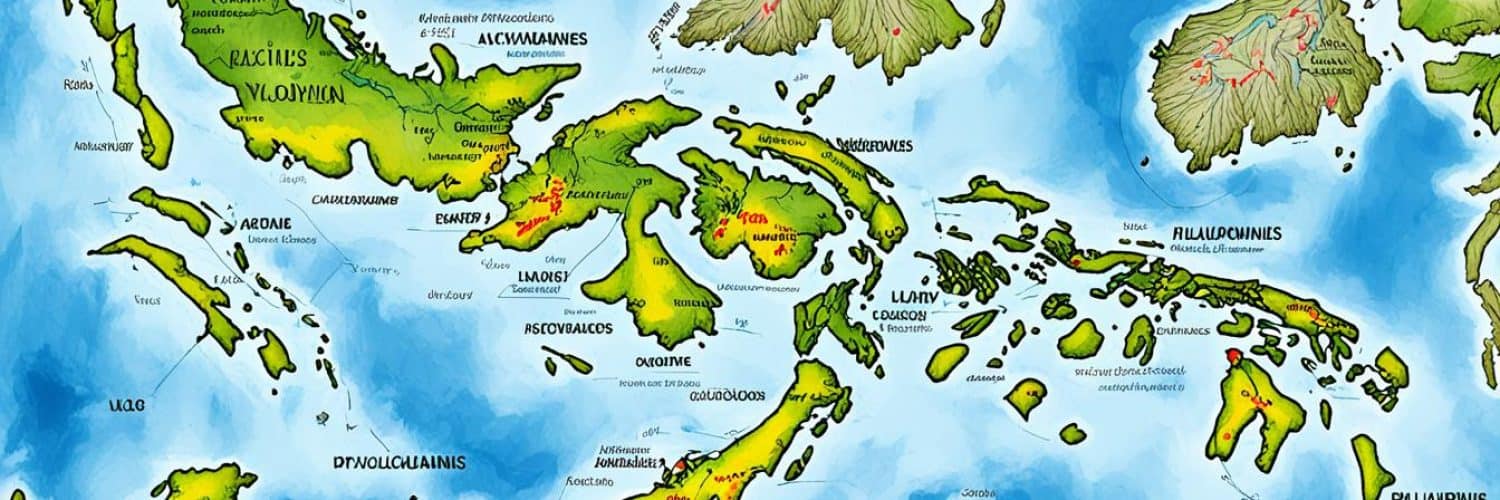

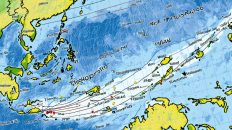
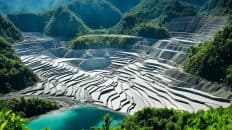










Add comment